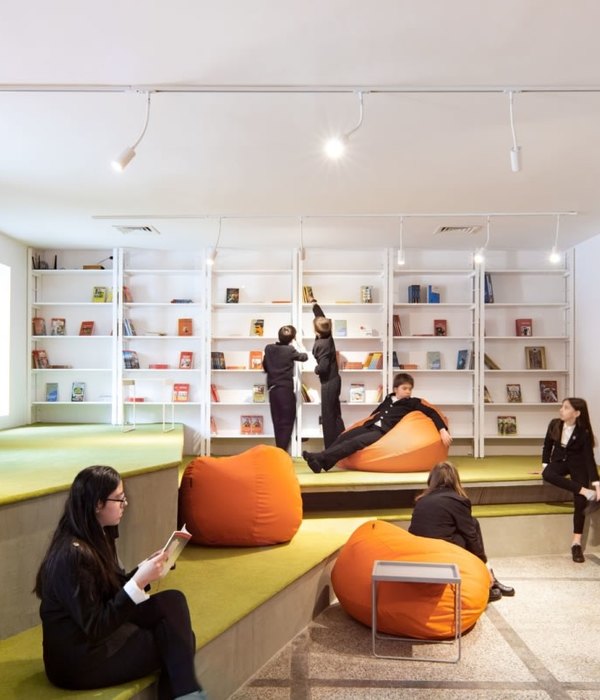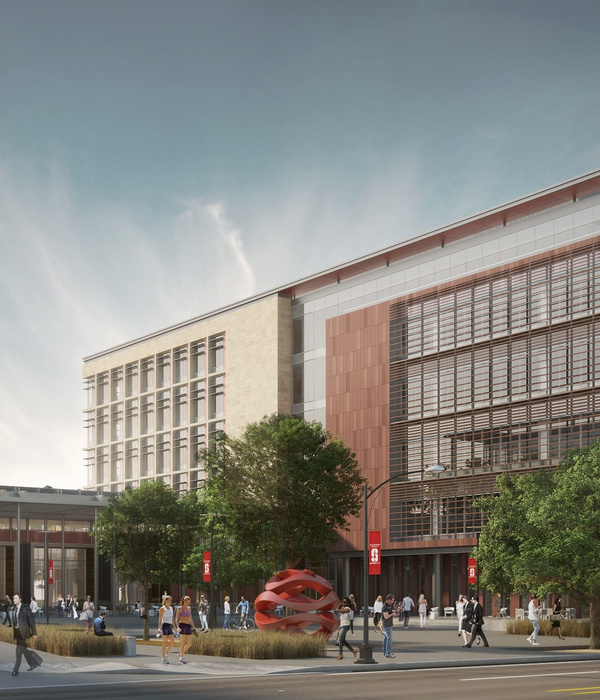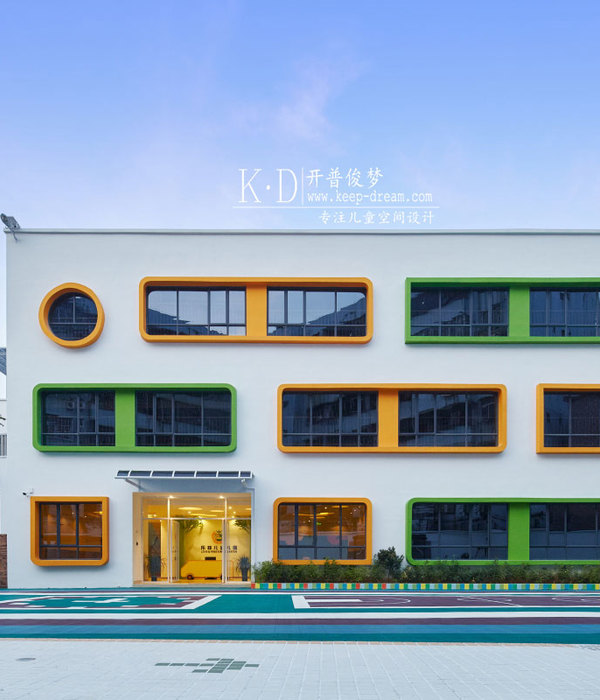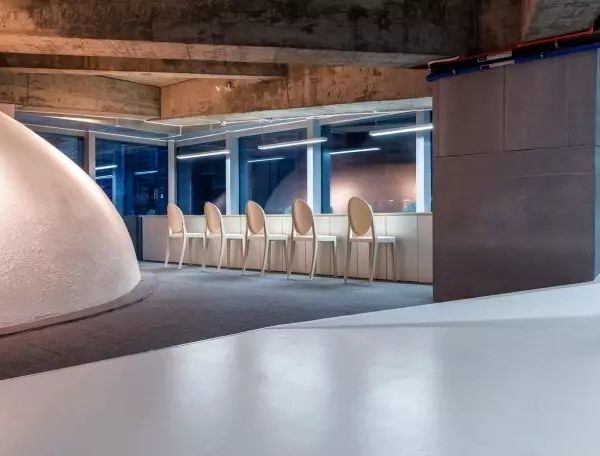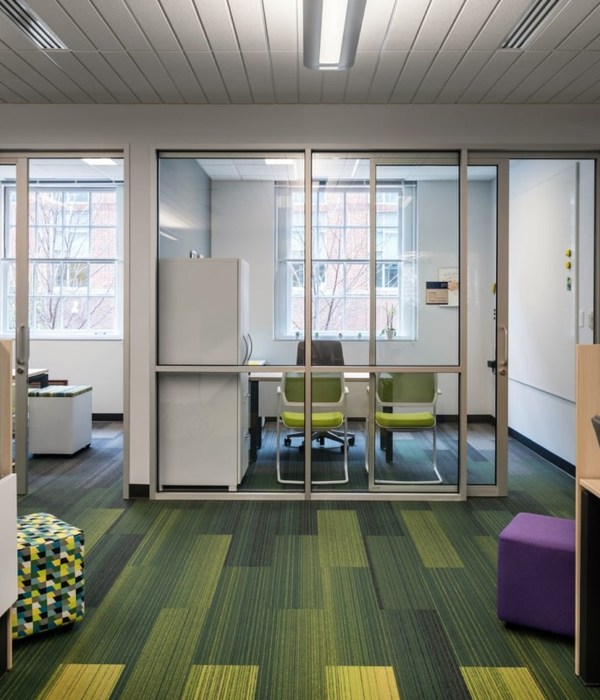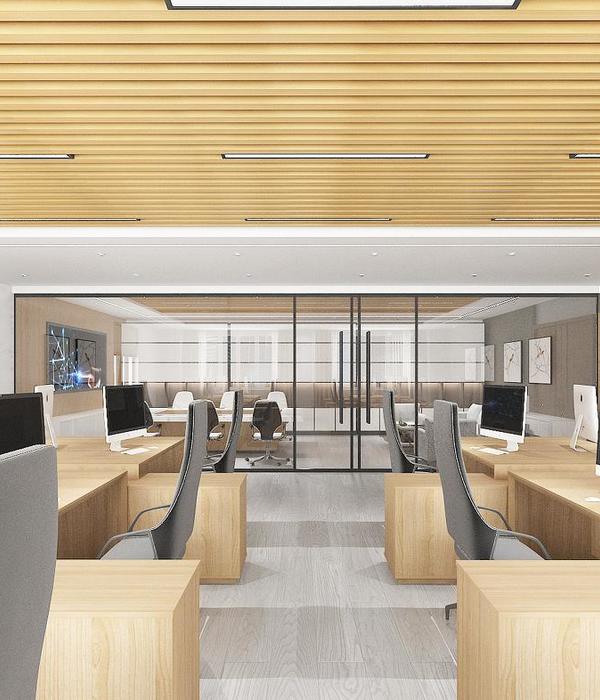云南省博物馆新馆设计
设计机构:云南银石时代设计顾问有限公司、ROCCO
云南省博物新馆四周是宽阔的平地,不论从街景还是沿河景观上都可观赏到建筑完整庄重现代的视觉形象。新馆净用地面积150亩,建筑面积60477平方米,主体建筑地面5层,地下2层。
新馆主体建筑室内平面呈回字形,取意于云南彝族“一颗印”式传统民居建筑;外观颜色为红铜色,意在体现云南“有色金属王国”的美称,贯穿多层的狭长缝造型,喻意“石林”,蕴含石林变幻体态,散发自然风采。
项目的设计灵感来自云南著名的地标“石林”,它是大自然鬼斧神工的自然地形景观。建筑看起来就像是由堆积的盒子组成,内里藏有奇珍异宝。这些盒子各自独立而又相互融合。博物馆的入口是通过一条狭窄的通道,形成蜿蜒穿越石林的体验。走到通道尽端是大型中央中庭空间。建筑外观上明显使用了垂直基准线,意味着展览空间和行政办公空间的区别,也让人联想到云南天然岩层中的水平岩层。大厅垂幕的一系列“切口”和“翅片”,有助联系中央大厅与内部连廊。自然光线透过双层外幕墙洒向室内空间,形成独特的氛围。 以石林为灵感的构想恰是源自设计团队有天看日出时,看到直射的阳光因为山体不同的曲度儿造成光线的不规则形状,这是属于在石林中才可以看到的视觉奇观,设计将其运用在了新馆主体建筑、室内空间的构造上。
正方体造型的主体建筑取意于云南传统民居建筑,而在室内立面的设计中,错落有致的折面体和贯穿多层次的长缝造型则是经过抽象化的石林的表现形式。镶在立面上的一块块铝制金属片都打了孔,可是每块的孔都不一样,每一块都有不同的角度和通透度,期中穿孔的民族图案有疏有密,使其更接近石头的肌理,就像设计团队那一次的日出观感一样,在不同的日光条件下,博物馆室内空间也会变幻出图形与色彩。
此外,同样是受到石林的启发,设计团队还用木块拼搭起馆内的木凳,形似山体的岩石,层叠的艺术形态也是自然体态的体现。
整个博物馆有一个狭窄的大门,从入口处进入后,便是一个开阔的中庭,营造出别有洞天的感觉,配置着旁边的 4 个庭院,还为室内创造了冬暖夏凉的条件。
行至二楼,上方保留了建筑的管道结构,与下方陈列的古典文物产生一种轻与重,临时与固定的对立感与通透感,也成就了博物馆本身应该具有的那种穿越历史的时代感与艺术感。
The generative concept of the museum is derived from the potent imagery of Yunnan’s famed local "stone forests", the dramatic geography of raw, powerful beauty of the geological landscapes sculpted by nature over millennia, and the idea of stacked boxes holding fragile treasures, giving the architecture its defining metaphor as an assembled container of artifacts - a group of spatial volumes that congregates to form a larger mass, where individual pieces are still evident. The entrance experience to the museum is to be through a narrow passage, designed to induce the sensation of meandering through the stone forest, before one is suddenly confronted with the vastness of the central atrium space. The exterior volume is marked vertically with a datum line that implies a distinction between exhibition and administration office spaces, which also recalls similar horizontal strata found in the natural Yunnan rock formations. Horizontally, the façades are created with a series of negative "cuts" and positive "fins", linking the city to the interior atrium. Natural light filters through the external double-façade rendering the internal spaces with an ambience as well as a sense of orientation.
The site is featurelessly abstract in a newly developed suburb of Kunming city. It is located adjacent to a river, a roadway and a new art and cultural centre with few specific contextual factors, thus encouraging the square- planned, cubic form of the museum. At the back of the building is a public promenade with a sculpture park. The total floor area of the museum is approx. 60,000 sqm. The total building height is a modest 34.2m, with two storeys of underground back-of house supporting facilities & five storeys of public exhibition spaces and galleries overground. The design stresses the experience and process of discovery; the analogy of discovering a "lost world" on penetrating a seemingly protective cliff, when one is suddenly transferred to a different time and ambience. In terms of sustainability the museum makes use of the excellent climatic conditions of the high-plateau of Yunnan privileging natural ventilation for the atrium, inserting open courtyards and local vegetation. Furthermore Photo-voltaic is integrated in the building, allowing minimal energy consumption for lighting and Air conditioning, needed for the collections galleries。
{{item.text_origin}}



